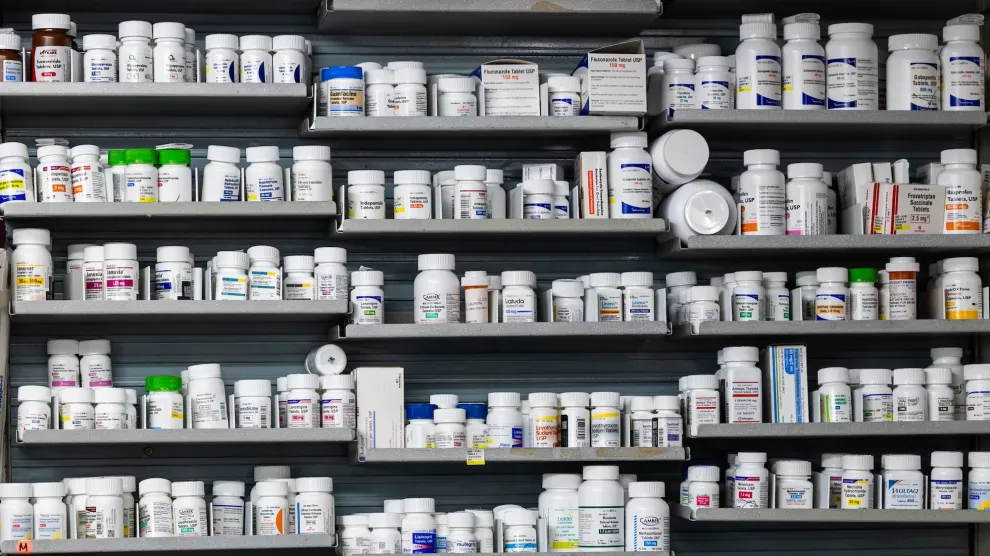The War on Drug Prices Is Just Getting Started
On Thursday, the Biden administration announced that it had negotiated down the cost of the 10 most costly drugs covered by Medicare in a landmark deal. Once the reduced prices are enacted, in 2026, patients are expected to spend billions less out of pocket—as is the US government.
Meanwhile, Kamala Harris is speaking in North Carolina and elsewhere to push a new slate of economic policies, including aggressive action on price gouging, medical expenses, and the rising cost of living. What are the natural next steps for Democrats to build on the momentum of the White House’s Medicare deal?
They’ve got a lot of options. Even among generic drugs, prescriptions cost around three times as much in the US as they do in other countries. Americans across political parties also agree that the federal government negotiating drug costs down is a good thing, according to KFF and other polls.
There are at least four paths the government can take to keep cutting prescription drug costs that are likely to meet with similar public support—so people don’t have to forgo prescriptions they need.
Negotiate Rare Disease Drugs Under Medicare
Rare disease drugs—also known as orphan disease drugs–can cost a pretty penny. In 2019, nearly 7 million Americans on Medicare had a rare disease, alongside some 20 million or more rare disease patients without Medicare coverage. But even with Medicare, these medications and treatments can still cost individuals thousands of dollars out of pocket each year.
Thomas Waldrop, a health policy fellow with The Century Foundation, says going after the cost of rare disease drugs could have a meaningful impact on out-of-pocket costs.
“These more niche drugs for these rare diseases,” Waldrop said, “might have an outsized impact on disabled communities or chronically ill patients, who might have had disproportionately high health spending.”
Unfortunately for rare disease patients hard-pressed by medical bills, rare disease drugs are currently exempt from negotiations under the Inflation Reduction Act, partly thanks to arguments that the exemption encourages pharmaceutical companies to invest in relevant research.
Pass the Savings to Private Insurers
Nearly two-thirds of Americans under the age of 65 are on employer-sponsored health insurance, according to KFF. Given that the average annual premium is around $8,000 for such plans, people without Medicare’s protections can be hit with large prescription cost bills, especially at the beginning of the year. It doesn’t have to be this way.
“If these same prices were available to employer-sponsored insurers, there would be these even bigger savings,” Waldrop said.
One current roadblock, as a Center for American Progress report highlights, is that “individual employers have limited ability to negotiate lower prices for their insurance plans.” That’s where a governmental response may be more fruitful.
Tackle Overpriced Treatments for Chronic Illness
We know it’s possible for expensive drugs that treat chronic illnesses to be made cheaper. For example, more Americans can now get a month’s supply of insulin for $35, a significant reduction for a lifesaving treatment long marked by price gouging. But it can still be challenging for uninsured and underinsured people to secure affordable insulin, especially if they are insulin-dependent but don’t have Type I diabetes.
The federal government could fight—including through sustained public pressure—to get pharmaceutical companies to bring high prices for inexpensively made drugs in line with actual production costs. Those costs can pose a burden to chronically ill young people in particular, says Generation Patient CEO Sneha Dave, as they may have unstable health insurance for the first time in their lives.
Dave would look to “the impact that the Inflation Reduction Act can have on state drug pricing, for example, with prescription drug affordability boards that affect patients of all ages.”
Fight for Patent Reform
In July, the Affordable Prescriptions for Patients Act unanimously passed the Senate. The Act tries to clamp down on pharmaceutical companies’ practice of applying for (and receiving) multiple patents for nominally different uses or formulations of the same drug, which keeps cheaper generics off the market.
“Lowering drug prices requires comprehensive reform,” Dave says, including to the way medical patents are regulated, “to ensure affordability for the current and next generation of patients.”
Enacting the APPA, currently waiting to be heard in the House of Representatives, would be another move in the right direction.
Author: Julia Métraux
Source: https://www.motherjones.com/politics/2024/08/medicare-biden-white-house-drug-price-negotiation-pharma-next-steps/
Sign up for our newsletter to stay up to date on what's happening with the America Project and our Connect the Dots Campaign!




Post Comment